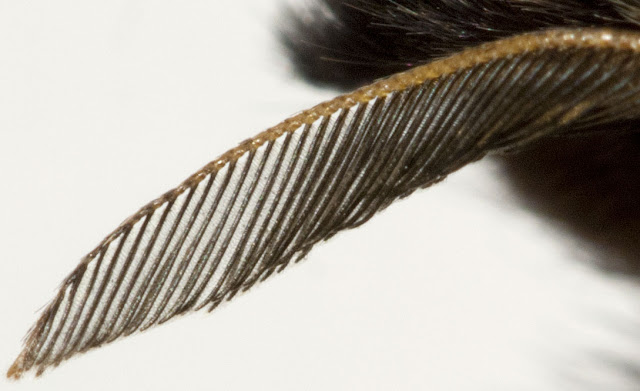 |
| December Moth, Poecilocampa populi. Inside the back door to my garage on 5 January 2012. |
On January 5th I went to put it out, and found the creature above sitting on the inside of my garage door. I had been hoping to see one for a while. It's a December Moth, with brown and gold markings that are very different from the pale November and Winter moths.
However, when I went to encourage it onto some ruled paper, I found that it was dead. I know I didn't accidentally bring it into the garage on my trap, because I examine all its parts very carefully before putting it away, so it must be a coincidence. It might easily have died quite naturally; it's one of the Eggar Moth group and none of the Eggar adults are able to feed.
So, I carried on putting out the trap, and the next morning there was a moth actually in it! All my earlier winter catches, the Winter Moths, the Feathered Thorn and the Scarce Umber, were on or near the trap and hadn't actually gone inside, as most of the summer moths do. So I was intrigued.
This glossy creature is a Dark Chestnut, and it was so shiny that it wasn't easy to take a good photo. This is the best I could do. It was quite docile, but definitely alive - you can see that it has shifted its wings a little between photos.
It's a plump little thing that comes out on milder winter nights. It is known to feed on sugar and ivy flowers, so would probably go for any sweet decaying berry too.
 |
| Dark Chestnut, Conistra lugula. Noctuid. In my moth trap in Hayes on 6 January 2012. |
 |
| Closeup of the wing of a December Moth, Poecilocampa populi. 8 January 2012. |
 |
| Closeup of the antenna of a December Moth, Poecilocampa populi. 8 January 2012. |
No comments:
Post a Comment